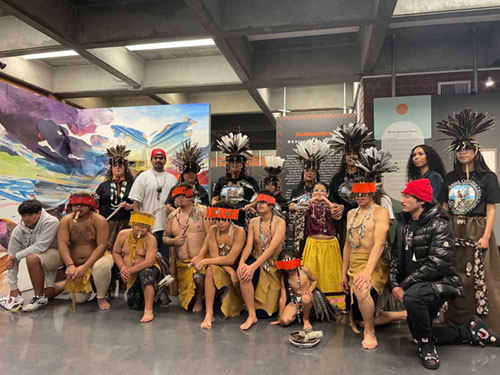The Historical Trauma of Native Americans
The Historical Trauma of Native Americans May 2023

The American Psychological Association defines trauma as “an emotional response to a terrible event like an accident, rape or natural disaster…. Longer term reactions include unpredictable emotions, flashbacks, strained relationships and even physical symptoms like headaches or nausea.” Almost everyone has experienced trauma at some point in their lives, and many have suffered traumatic experiences more than once.But what happens when a group of people suffers ongoing trauma that lasts for generations?
What Is Historical Trauma?
Dr. Maria Yellow Horse Brave Heart, a Native American and professor at the University of New Mexico has studied the trauma that the aboriginal tribes have suffered over the last 5 centuries. Her research has led her to the creation of the term “historical trauma” to define the effects of hundreds of years of mistreatment on the Native American psyche. Historical trauma is “the cumulative emotional and psychological wounding over one's lifetime and from generation to generation following the loss of lives, land and vital aspects of culture.” This is what Native Americans have always faced and continue to struggle with today.
Genocide, Dislocation and Violence
The rates of addiction, sexual abuse, violence and psychological problems among Native Americans are very high. Among the worst affected were the survivors of the infamous boarding schools. Whatever they went through, generations of Native Americans were permanently scarred by their experiences. The loss of cultural identity leaves a gaping chasm in a person’s mental makeup. Because of this, as one generation succeeded the previous one, the scars remained and this led to the inability to form healthy bonds with families and communities which resulted in an ongoing cycle of broken families and wasted lives.
Generally speaking, Stoicism is an inherent part of the traditional mental makeup of Native Americans. It is that ability to bear with pain, suffering and loss and to continue to carry on with the lives that has allowed the people of the tribes, across the U.S., to overcome the devastation and destruction done to them and to rebuild their lives as contributing citizens of their respective tribal communities and to this country. However, that does not mean that the trauma is in the past and can easily be excused and forgotten. It is something that Native Americans live with everyday of their lives and it is not that they are harboring old resentments. They continue to face prejudice and discrimination and live a quality of life that is less secure, satisfying and peaceful than those of the dominant society’s“White people”.
Understanding Leads to Healing
Modern scientific evidence suggests that this kind of historical trauma is passed down to generations on the cellular level. In other words, even those who appear to have secure and comfortable lives still carry with them, at a cellular level, the trauma of the past. Understanding, acceptance, and acknowledgment are the pillars on which healing rests and until this comes to pass, the historical trauma of the Native Americans will continue to pass from generation to generation – the disposed people of the Americas.
Native American tribes like the Muwekma Ohlone continue to combine their old culture and traditions with a modern lifestyle. They may appear to be adaptive and doing well. However,their quality of life cannot be evaluated based on superficial appearances. Until steps are taken to address these historical traumas that the tribes carry with them, Native Americans will never be free from the pain, grief,and loss that has been inflicted on them since the first European colonists arrived on this continent.